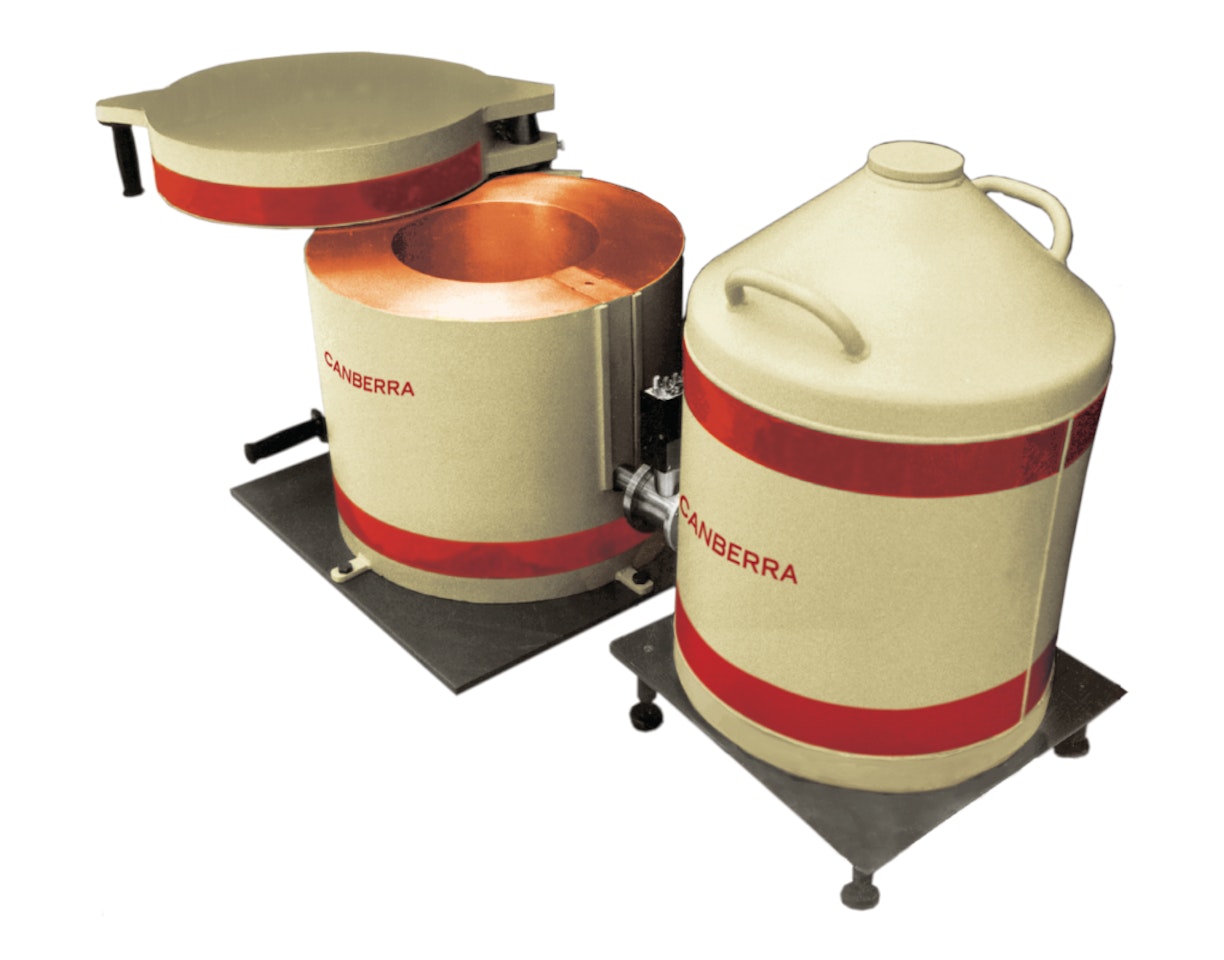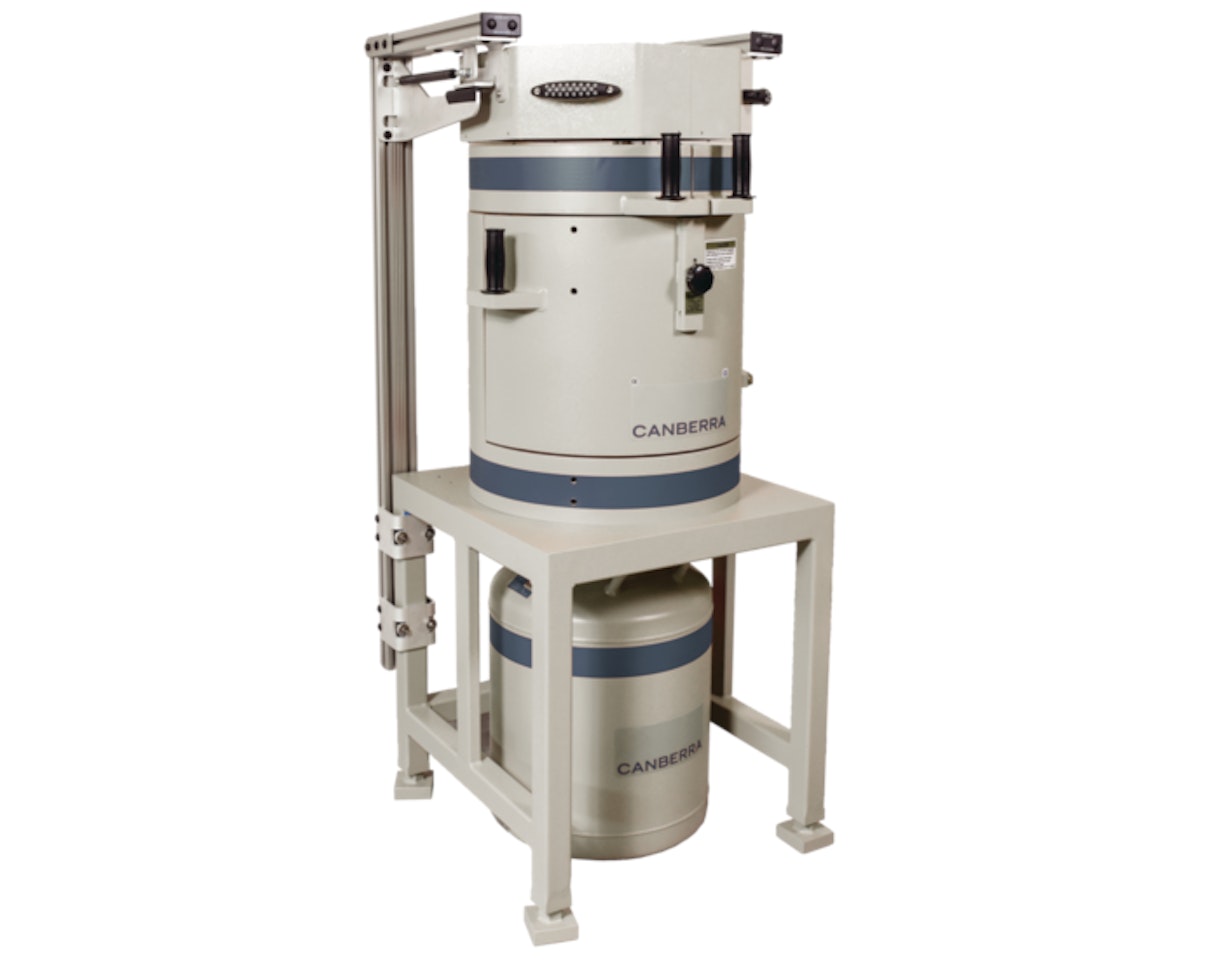Description
The 767 system is a full-size and full-featured lead shield for use with germanium detectors having a vertical orientation. It has several unique design features and is built with a great deal of attention to fit and finish. The 767 shield features 10 cm (4 in.) lead thickness and is jacketed by a 9.5 mm (3/8 in.) steel outer housing. The graded liner consists of a tin layer of 1 mm (0.040 in.) thickness and a copper layer of 1.5 mm (0.062 in.) thickness. There is no exposed lead in the 767 shield with or without the doors closed. The inside dimensions are 28 cm (11 in.) diameter by 40.6 cm (16 in.) high.
The top doors of the 767 shield are linked so they open and close together regardless of which is actuated. The front door opens to the right on precision adjustable hinges and provides full shield access. A novel latch secures both the front and top doors and provides a means to lock the shield with a user-supplied padlock.
A shield table compatible for 7500SL and 7504SL cryostats is included in the standard package. The shield table is equipped with leveling legs and with braces which allow the assembled shield to be moved with a simple pallet truck. While the standard shield table is compatible with 7500SL and 7504SL cryostats, Mirion recommends to use cryostats with a Remote Detector Chamber (RDC). The advantage of the RDC is that the preamplifier can also be properly shielded from the HPGe detector improving the background performance of your detection setup. The optional tall table is available to conveniently fit a dipstick 7500SL-RDC detector in the shield.
Optional annular lead plugs are available to minimize the streaming path through the hole in the shield floor. Before ordering stand-alone annular lead plugs into existing lead shields, first determine the opening diameter of the hole in the shield floor. Older versions of the 767 shield may have a smaller opening diameter compared to the current 4.75 inch diameter.
The 767 shield is finished outside with an attractive textured light gray epoxy paint. The copper interior has a brush grain finish with a clear polyurethane coating to retard tarnishing.








